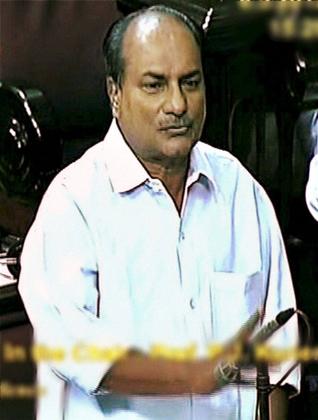 New Delhi, May 9: India is looking to crank up its defence budget to counter the deepening military nexus between China and Pakistan, which could even extend to it being confronted with a two-front war in a worst-case scenario.
New Delhi, May 9: India is looking to crank up its defence budget to counter the deepening military nexus between China and Pakistan, which could even extend to it being confronted with a two-front war in a worst-case scenario.Defence minister AK Antony on Tuesday told Rajya Sabha he would seek a hike in the Rs 1,93,408 crore (around $39 billion) defence outlay in the 2012-13 budget due to "new ground realities and the changing security scenario".
"The growing proximity of China and Pakistan is a cause of worry...I know the gravity of the situation. We have to take a second look at the defence budget in light of the changing threat perceptions,'' he said.
The Army's new doctrine and "pro-active strategy" has also factored in the remote but plausible contingency of grappling with both China and Pakistan simultaneously in a two-front war, as was first reported by TOI earlier.
The armed forces had sought a defence outlay of Rs 2,39,123 crore this fiscal that would have amounted to 2.35% of the projected GDP for 2012-13, but ultimately got only Rs 1,93,408 crore to notch up 1.9%.
Now, after Gen VK Singh's warning about "critical hollowness" in the Army's operational capabilities to deal with two "inimical neighbours", the government is doing a serious rethink. "The defence budget has to be enhanced to deal with the new challenges," said Antony.
This came after opposition leader Arun Jaitley stressed the importance of shaping India's strategic policy and defence preparedness as per "changing geo-strategic realities". Though he was "almost sure" there would be no conflict, Jaitley said India had to be prepared for a "90-day full spectrum war". "How do we defeat Pakistan and how do we hold China? All this has to be factored in," he said.
Antony acknowledged there was need to "speed up" several plans already underway to boost operational military capabilities as well as border infrastructure through strategic road and rail links. "If China can increase its military strength in Tibet, India can do the same in Arunachal, Sikkim and other areas," he said.
Two new infantry divisions - with 1,260 officers and 35,011 soldiers - for instance, have been raised that are based in Zakama (Nagaland) and Missamari (Assam), apart from independent armoured and artillery brigades and a joint air defence center.
"In the 12th Plan period (2012-17) also, we will build a new offensive corps, with two specialized divisions for high-altitude areas. The (over Rs 60,000 crore) proposal has gone to finance ministry," said Antony.
This new mountain strike corps headquartered in Panagarh (West Bengal) will give India, which for long concentrated on only the land borders with Pakistan, new offensive ground capabilities against China.
Then, India will get aircraft carrier INS Vikramaditya (Admiral Gorshkov) and indigenous nuclear submarine INS Arihant, armed with nuclear-tipped missiles, early next year to add to the nuclear attack submarine INS Chakra already inducted from Russia on a 10-year lease. "In fact, Navy will be getting five new warships every year from now onwards," said Antony.
IAF will be strengthened with 270 Russian Sukhoi-30MKIs already being inducted for around $12 billion, the 126 new medium multi-role combat aircraft to be acquired in the almost $20 billion MMRCA project and the 250 to 300 fifth-generation fighters to be built with Russia in the gigantic $35 billion programme.
Besides, apart from transport aircraft like C-17 Globemaster and C-130J Super Hercules, there will be 120 Tejas light combat aircraft as well as 51 upgraded Mirage-2000s and 63 MiG-29s to add to its combat fleet.





Comments
Add new comment